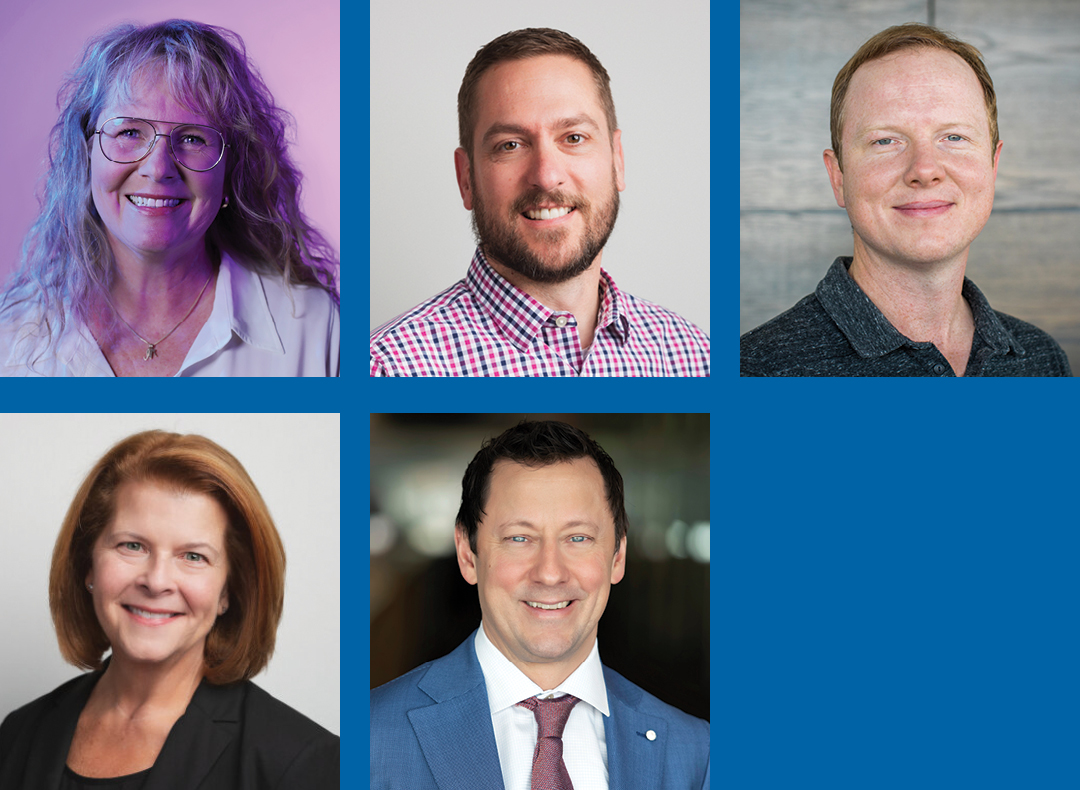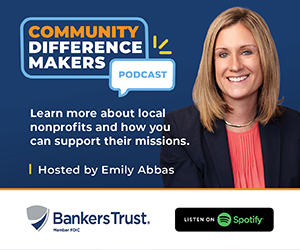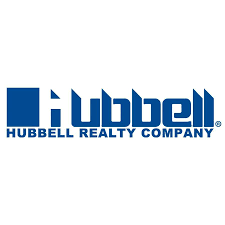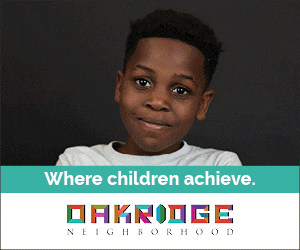Local industry leaders taking next step with AI tools for research, simulations

Lisa Rossi Oct 3, 2025 | 6:00 am
7 min read time
1,721 wordsAll Latest News, Innovation and Entrepreneurship, Retail and BusinessA little over a year ago, a group of 11 employees across different disciplines at local marketing agency Meyocks began meeting regularly to tackle topics like leveraging artificial intelligence for market research, how to feed information from Excel to ChatGPT, and using AI to simulate its client’s target audiences.

Its name? The “AI outlaws,” said Beth Ann Boyd, Meyocks’ vice president of digital delivery.
The biggest initiative to come out of the group has been creating a “comfort level” among Meyocks employees with using AI, Boyd said.
“I do think that there is a learning curve,” Boyd said. “I think there’s a comfort curve as well. Not just learning, you have to be comfortable with it. … There is no handbook out there right now. This is so new. … It’s about trial and error and experimentation, and the more you’re willing to do that and try that and just start to integrate it into your every day, that’s how you’re going to learn.”
Marketing and advertising agencies across Central Iowa are taking their experimentation with AI to new levels while charting ethical waters and navigating other organizational changes. Uses range from correcting or animating an image with an AI tool, rendering videos at faster speeds and applying voiceovers, to automating daily tasks such as writing emails and performance reviews.

“These tools are good at creating decent social media content,” said Chris Snider, professor at the Drake University School of Journalism and Mass Communication. “They’re good at doing market research, analyzing trends. … If you’re in the marketing world and you’re not currently starting to truly implement some of these tools, you’re probably falling behind.”
At Meyocks, the agency recently created a new proprietary AI technology to help agricultural markets test and refine their messaging by simulating farmer mindsets. Called Sam, which stands for Simulated Audience Mindset, the tool is engineered using public domain data of target audience segments as well as proprietary and client-specific data, the company said.
“Sam is my baby,” Boyd said. “I’m so proud of this. … The first one that we did was a producer for our agricultural market, but we have a Sam for many of our clients now.”
Sam is intended to be “an expert in the room,” and simulate how an intended audience might think, feel and react to messaging and visuals, Boyd said.
AI frees up teams to be more innovative

Joe Winn, vice president of brand strategy at Lessing-Flynn, said the team there is trying to master its use of AI as a research tool. Traditionally, they have leaned on surveys, research reports and going to conferences and trade shows, he said.
“We still do all of those things, but now all of our strategists, they have this tool at their fingertips where they can keep apprised of emerging trends,” he said. “Research, all of a sudden, is readily available. … All of a sudden, if you’re asking the right questions, you know what kind of content you’re looking for, that’s now available.”
He noted that they aren’t using it to get gated content.
“Our strategy isn’t ‘Hey, let’s just use ChatGPT instead of paying for research,’” he said. “It’s just that now through using these tools for research, a wealth of everything is at our fingertips.”
Another area Lessing-Flynn is looking at is agentic models, he said. According to IBM, AI agents are “machine learning models that mimic human decision-making to solve problems in real time.”
Winn said all of their clients have different sales journeys and their customers go through different funnels, a lot of which is happening online.
“How agents are going to come in and start to impact that world is they’ll start to do a lot of this stuff for us,” he said. “I will equip an AI agent with my financial information, my personal information, what I’m looking to achieve and [it] will act on my behalf. [It will] contact the necessary parties. [It will] book travel, [it will] make recommendations.”
Lessing-Flynn team members are currently building content to help AI agents understand and navigate its clients’ sales journeys, he said.
“This positions us for a future where consumers increasingly rely on AI agents to make informed decisions and take action on their behalf,” he said.

At Principal Financial Group, leaders are asking themselves how to use AI to drive quality while still having a human in the loop, said Beth Wood, Principal’s executive vice president and chief marketing officer.
“How do we use it to reduce costs, improve speed, streamline workflows and help us create more scalable opportunities?” she said. “We are transforming our entire workflow process with AI.”
Like Lessing-Flynn, Principal is also creating AI agents. For example, in content marketing, a team can process-map how content is built, then build an AI agent to help streamline that process or workflow, she said, “so that you can take building a piece of content from days to hours.”
“That’s the goal,” she said.
At Principal, AI agent capabilities are being embedded in platforms like ServiceNow, Salesforce and call-center automation, Wood said.
Internal custom AI agents are in early development and deployment, she said.
Principal has also built a proprietary AI capability, called the Principal AI Generative Experience, which provides a secure environment to work in, Wood said.
“It allows us to put our own proprietary strategies and data into this platform and have outputs that are AI-generated, and allow us to make decisions like we would if we were using ChatGPT, but it’s within our own environment and our data doesn’t end up out in the external environment, unsecured and available to all,” she said.
AI has the potential to transform marketing content development, Wood said. Currently, marketers gather insights and research, synthesize the headline and key points and then write the content
“That’s the value chain that you’re dealing with today. In an AI world, AI synthesizes the research and insights because it already has access to that. It’ll take our internal research and insights, it will pull in relevant external research, and now we’ve got a combination of both,” she said. “It’s really synthesized the insights that are going to be used to inform the content, and then it produces a brief, because it has our brief template. I don’t have to write the brief.”
Then, Wood can direct the AI tool to write an article or an outline for a podcast, or a set of slides for a webinar, she said.
“It’s allowed me to think more at the highest order. Rather than having to deliver the execution, it’s synthesizing the data for me. I’m not synthesizing the data, I’m thinking more about the customer, what the customer wants to be informed on. That’s where it’s freed us up to be more innovative so we can think more holistically about the headline and the supporting points, because now we’ve got that research synthesized, we’ve got that brief written for us, and now my 20- or-30 day timeline is reduced to hours.’
AI spurs need for training, ethics discussions
Marketing leaders emphasized the continued need for human touch and involvement when using AI tools.
Even though Meyocks’ tool helps simulate audience opinions, the agency still recommends that clients don’t get rid of first-party research, such as online surveys, focus groups or making connections at local events or farm shows, Boyd said.

When Flynn Wright President Paul Schlueter is asked about the impact of AI in marketing, he talks about the “human-centered creativity” he values. Flynn Wright team members use AI tools, such as ChatGPT, as a reference, he said.
“Sometimes they’re using it very gracefully as [a] research tool or secondary tool,” he said. “But if everyone’s using ChatGPT as a creative or a content tool in terms of developing ‘original’ content, then we’re just going to look alike. And it is not our goal to be undifferentiated. Our goal is for our clients to be highly differentiated in very competitive industries, and that is where that brand of human-centered creativity really comes to the forefront in our business philosophy.”
As AI has become more prominent, marketing firms have the challenge of increasing training on new tools. Many agencies have groups like Meyocks’ AI outlaws that take the lead on learning new tools and helping others who want to learn.
At Principal, the desire for the workforce to learn AI has come from the top, Wood said.
President and CEO Deanna Strable is committed to elevating education on the world of AI across all 20,000 employees, Wood said, noting that Principal has held training sessions about how to develop appropriate prompts, how to leverage AI in day-to-day work and how to leverage AI long-term for greater innovation and customer experience.
“[Employees are] curious about, ‘OK , well, if I put this in, what do I get?’ And they’re starting to experiment, so that’s a good thing,” Wood said. “We also talk about it in every town hall we can. We use examples of teams using AI to achieve outcomes so that everybody across the employee population gets to see demos and gets to see examples of goodness coming out of artificial intelligence.”
The ethics of AI also has marketers looking inward, contemplating issues like copyrights, energy usage and source material.
“There’s always a human looking at the output from the AI and just doing that sanity check and making sure that what the AI is delivering to us is, in fact, accurate and can be validated by the human,” Wood said. “AI is the copilot, not the autopilot.”
Winn said the amount of water the Microsoft data centers in West Des Moines use to cool off their computer systems is a “major concern.” The Des Moines Register reported in June that West Des Moines Water Works data shows that the city’s data centers “were the utility’s largest water user for the 12 months ending in March, at 70.5 million gallons.”
“I think as a society, as we move forward, we need to continually think about how are we using these tools?” he said.
One thing that leaders talk about with team members is to be efficient with AI tools, he said.
“The more efficient you are with these tools, then the less environmental impact you’re going to have,” he said.

Lisa Rossi
Lisa Rossi is a staff writer at Business Record. She covers innovation and entrepreneurship, insurance, health care, and Iowa Stops Hunger.










